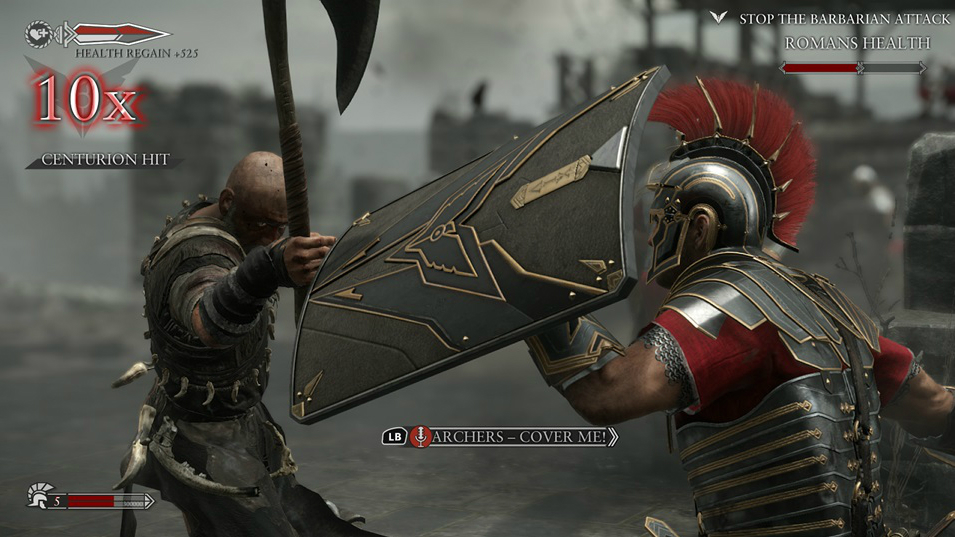Ryse designer: Xbox One Kinect's problem isn't the tech, it's you
It's the humans' fault. Blame the humans

Ryse: Son of Rome has changed a lot since that initial trailer at E3 2011, where it started life as a first-person Kinect title.
The game will finally see the light of day on November 22 alongside the Xbox One, now played from a third person perspective without any reliance on Kinect at all.
Ryse's design director Patrick Estevez still has a lot of hope for the future of Kinect, but told TechRadar that it currently has a "design conundrum" when it comes to integrating it into games that don't rely on it completely.
"I always refer to the design conundrum of Kinect where basically it's not a hardware issue - and whatever the hardware limitations are, there are workarounds and a lot of ways to do things," said Estevez.
"But you put 25 people into a room and you tell them to row a boat, everyone rows the boat in a different way.
"The problem is humans. And so what you end up doing is trying to teach people how to row a boat rather than play the game."
Time for a rethink?
Estevez certainly isn't against Kinect as an idea. In fact, he told us that he'd "definitely be into doing a full-on Kinect title". But right now he realises that it's difficult to get the best of both worlds - full gesture control and fluid, immersive gameplay from the off.
Get daily insight, inspiration and deals in your inbox
Sign up for breaking news, reviews, opinion, top tech deals, and more.
"The dancing games work really well because it's dancing, everyone understands music and dancing.
"But you try to make a boxing game and you try to say 'Ok, this is a right hook' and one guy goes like this and one guy goes like that.
"If a right hook and a jab are ever going to have any gameplay difference then you need to teach them that this is a jab and this is a right hook."
Despite the fact that the new Kinect is miles better than its current version, we doubt Estevez is the only one who feels this way. So what's the solution?
"I truly believe that there has to be a rethinking of how to interface with people when making games, and it's completely a design conundrum," he said.
Ryse to the challenge
Ryse couldn't quite nail it all, so Crytek made compromises to deliver the game it really wanted to create.
"There were things that were stronger than Kinect that we wanted to do. I guess that's the best way to put it. We knew we wanted to make an up close brutal game, we wanted to have up close cinematic cameras, we wanted to push facial performance and have a really good story," said Estevez.
"So at some point we just said 'Ok we need to get along with making the game we want to make - this story-driven Roman game.' and it makes more sense to do something that challenges us at Crytek so we did a third person action adventure."
- Check out our hands on review with Xbox One Kinect
Hugh Langley is the ex-News Editor of TechRadar. He had written for many magazines and websites including Business Insider, The Telegraph, IGN, Gizmodo, Entrepreneur Magazine, WIRED (UK), TrustedReviews, Business Insider Australia, Business Insider India, Business Insider Singapore, Wareable, The Ambient and more.
Hugh is now a correspondent at Business Insider covering Google and Alphabet, and has the unfortunate distinction of accidentally linking the TechRadar homepage to a rival publication.
